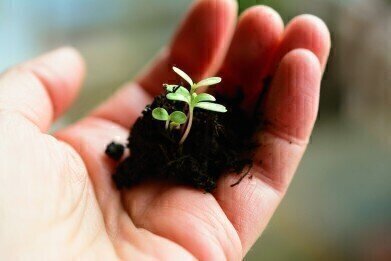Environmental Laboratory
How Does Self-Watering Soil Work?
Dec 03 2020
A team of scientists from the University of Texas have invented a special type of soil which absorbs water from the air and then releases it on land. Not only does the soil have the potential to reduce the amount of water needed to nurture crops, but it could also facilitate the cultivation of all kinds of produce in climates that are normally inhospitable to agriculture.
Although still in the early stages of development, the discovery could represent a huge breakthrough in solving the critically important agriculture-water interface. With an increasing global population and rising temperatures being witnessed across the world, the scarcity of planet Earth’s most precious resource could become a serious issue in the years ahead. This self-watering soil could be a crucial solution to that conundrum.
How does it work?
The invention is the first fruit of more than two years of labour by associate professor Guihua Yu and his team. In 2019, they development a hybrid material composed of gel and polymers that is capable of absorbing significant amounts of moisture from ambient air, leading to their inventions being dubbed “super sponges”. The hybrids are also capable of cleaning the water absorbed, before releasing it through the use of solar energy.
In this application, the gels are embedded in soil and used to nurture crops. During the night-time, when temperatures are cooler and humidity levels are higher, each gram of soil is capable of absorbing up to four grams of water from the air. Then, when the sun comes up and the temperature rises, the gels within the soil release the water and it is distributed among the plants. The fact that some of that released water evaporates into the air increases humidity levels once more and encourages self-sustainability in the process.
In the lab
Yu and his team ran a series of four-week experiments to test out how well their self-watering soil held up against sandy alternatives. They found that the former was able to retain double the amount of water that the latter could, with 40% of the original moisture still present in the hydrogel soil after 28 days, compared to just 20% in the sandy soil.
In another experiment, they planted a number of radishes in both kinds of soil and monitored them over a two-week period. Aside from an initial watering at the outset of the experiment, they did not irrigate the hydrogel radishes at all, yet every crop survived the full 14 days. By contrast, they watered the radishes placed in sandy soil several times, yet none of them survived more than two days.
Practical applications
With food security a growing concern for governments across the world, the application of fertilisers and pesticides has become standard practice. While this certainly boosts yields, high concentrations of glyphosate, glufosinate and AMPA in a finished food product could harbour potentially damaging effects in the human body.
Therefore, any technological advance which expands the amount of arable farmland and reduces the need to rely so heavily on chemical additives is one to be welcomed. The self-watering soil could theoretically make it far easier to grow crops in arid locations around the world, solving food shortages for local populations and alleviating the strain on Mother Earth in a wider sense, as well.
Digital Edition
AET 28.2 April/May 2024
May 2024
Business News - Teledyne Marine expands with the acquisition of Valeport - Signal partners with gas analysis experts in Korea Air Monitoring - Continuous Fine Particulate Emission Monitor...
View all digital editions
Events
Jul 30 2024 Jakarta, Indonesia
China Energy Summit & Exhibition
Jul 31 2024 Beijing, China
2024 Beijing International Coal & Mining Exhibition
Aug 07 2024 Beijing, China
IWA World Water Congress & Exhibition
Aug 11 2024 Toronto, Canada
Aug 25 2024 Stockholm, Sweden and online









.jpg)








